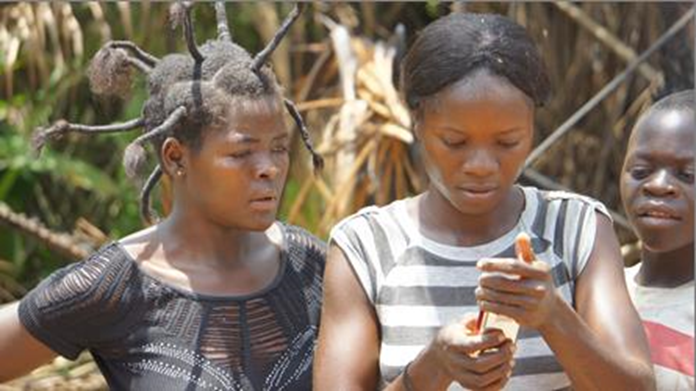
July 2014—In December 2009, the Lord’s Resistance Army (LRA) killed 321 civilians and abducted more than 250, including 80 children, in a massacre in Makambo, an isolated village deep in the forested area of northeastern Democratic Republic of Congo (DRC). It was one of the worst massacres in the LRA’s 23-year history. However, news of the event took three weeks to reach the outside world.
In response, USAID launched an initiative to enhance civilian protection in communities vulnerable to attacks by the LRA by increasing telecommunications services for use in early warning systems. To foster peace and security, the initiative expanded communication options for remote populations.
This USAID project extended mobile phone coverage to select towns in LRA-affected areas through a public-private partnership. The initiative combined USAID support with existing relationships with local officials and civil society groups, Vodacom’s interest in expanding its network, and logistical capabilities of the United Nations Organization Stabilization Mission in the DRC (MONUSCO). The project, which ran from September 2011 to January 2014, strengthened and expanded existing locally developed early warning systems by installing low-cost cellular towers in four LRA-affected areas in Bas and Haut Uele, Orientale province.
“The installation of the Vodacom cellular antenna has a positive impact in terms of security in our territory,” said Mulenge Ayuhe, administrator of the Ango territory. “Before the installation of the cellular antenna, there was no communication with the outside world. Now, we are connected to the rest of the world. This is a visible impact appreciated by the population at the local level.”
The Vodacom initiative complemented an earlier USAID project implemented by Catholic Relief Services and Caritas Congo in 2012 and 2013. Community-level protection mechanisms and communication networks were established that were essential for rapidly sharing information about humanitarian shocks, conflict indicators and related needs of the affected populations. The project facilitated the creation of 24 locally managed community protection committees and equipped them with high-frequency radios to strengthen communication between isolated communities, security forces, and humanitarian and protection organizations such as the U.N. High Commission for Refugees, the U.N. Office for the Coordination of Humanitarian Affairs, and MONUSCO.
The use of innovative mobile phone network technology was important to the Vodacom project’s success. While the technology had proven effective in other areas of the world with low population density and poor infrastructure, it had yet to be tested by any mobile operators in the DRC, and their unfamiliarity with the technology had precluded investment and experimentation. The USAID funding and assistance in arranging support from MONUSCO enabled Vodacom to take on the risk and experiment with the new technology.
The project used new low-cost, lightweight Altobridge stations. The stations are logistically less difficult to deploy than standard cell phone tower equipment in remote areas and their high efficiency cut total site operating costs by half, increasing the commercial viability of serving isolated communities.
Each tower covers a four-kilometer radius and provides cell phone service to at least 12,000 people. Vodacom is now also offering money transfer services (MPESA) in the areas, helping to reinvigorate local economies with fresh cash from remittances.
Success with the project inspired Vodacom to investigate additional options to expand coverage in remote areas using an even lower cost cell phone tower technology. Although these ultra-low cost stations have less range than the Altobridge stations used on the four USAID-funded towers, they are much easier to install in remote areas. To date, Vodacom has installed over 150 of these ultra-low cost towers throughout the DRC, and over 40 in LRA-affected parts of Orientale province since December 2013.
LINKS







Comment
Make a general inquiry or suggest an improvement.